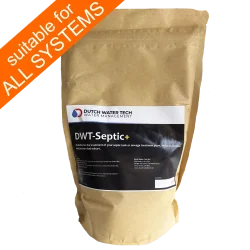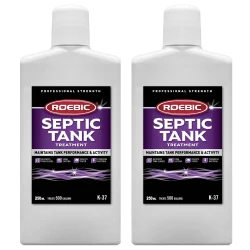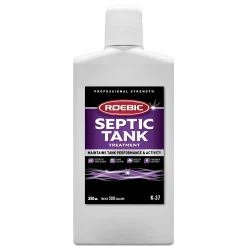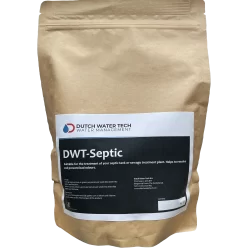Home » Knowledge base » How Does a Septic Tank Work?
How Does a Septic Tank Work?
Have you ever wondered what happens after you flush the toilet or drain the sink in a home that’s not connected to a municipal sewer system? If you’re one of the millions of homeowners who rely on a septic system, understanding how it works is crucial for maintaining a healthy and efficient household. In this comprehensive guide, we’ll dive deep into the inner workings of septic tanks, exploring their components, processes, and the importance of proper maintenance.
The Basics: What is a Septic Tank?
At its core, a septic tank is a large, underground container designed to treat wastewater from your home. It’s an essential part of a septic system, which serves as a small-scale sewage treatment facility for properties not connected to centralized sewer systems. Typically made of concrete, fiberglass, or polyethylene, septic tanks come in various sizes to accommodate different household needs.
Journey of Wastewater: From Your House to the Septic Tank
Let’s start by following the path of water as it leaves your home. Every time you use water – whether it’s flushing a toilet, running a washing machine, or rinsing dishes – that water, along with any waste it carries, flows through your home’s plumbing system and into a main drainage pipe. This pipe leads directly to your septic tank.
As the wastewater enters the tank, it begins a remarkable process of natural purification. The tank’s design allows it to hold the wastewater long enough for solids and liquids to separate. This separation is crucial for the effective treatment of your household waste.
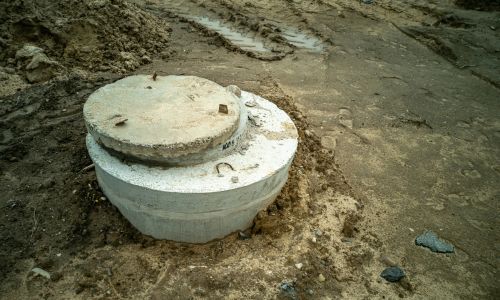
Inside the Septic Tank: A Three-Layer System
Once inside the tank, the wastewater naturally separates into three distinct layers:
- The Scum Layer: At the top of the tank, you’ll find a layer of oils, greases, and other lightweight materials that float to the surface. This scum layer forms a barrier that helps prevent odors from escaping and insects from entering the tank.
- The Effluent Layer: In the middle is the clarified wastewater, also known as effluent. This is the partially treated water that will eventually leave the tank and enter the drain field.
- The Sludge Layer: At the bottom of the tank, heavier solids sink and form a layer of sludge. Over time, anaerobic bacteria in the tank begin to break down this sludge, reducing its volume.
The Bacterial Workforce: Nature's Tiny Helpers
One of the most fascinating aspects of a septic tank is the role that bacteria play in the treatment process. The tank is home to millions of anaerobic bacteria – microorganisms that thrive in oxygen-free environments. These bacteria are the unsung heroes of your septic system, working tirelessly to break down organic matter in the wastewater.
As these bacteria digest the organic solids, they convert them into simpler compounds and gases. This process not only helps to reduce the volume of sludge in the tank but also begins the important work of purifying the wastewater.
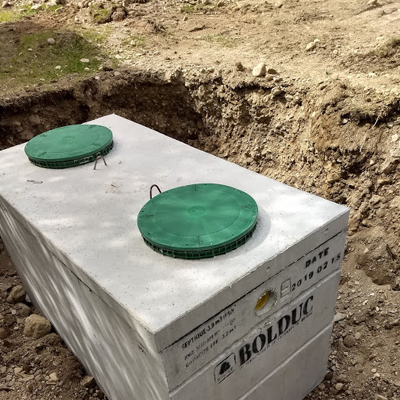
Importance of Baffles: Striking a Flow
Septic tanks are designed with internal structures called baffles. These baffles play a crucial role in the tank’s function by regulating the flow of wastewater. The inlet baffle directs incoming wastewater downwards, below the scum layer, to prevent disturbance of the separation process. The outlet baffle, on the other hand, ensures that only the clarified effluent from the middle layer exits the tank, keeping scum and sludge inside.
From Tank to Drain Field: The Next Step in Treatment
As new wastewater enters the tank, it displaces the existing effluent, pushing it out through the outlet pipe and into the drain field, also known as a leach field or soil absorption system. This is where the final stage of treatment occurs.
The drain field consists of a network of perforated pipes laid in gravel-filled trenches. As the effluent flows through these pipes, it slowly seeps into the surrounding soil. This soil acts as a natural filter, removing harmful bacteria, viruses, and nutrients before the water reaches the groundwater.
The soil in your drain field is teeming with aerobic bacteria – microorganisms that require oxygen to survive. These bacteria continue the purification process started in the tank, further breaking down any remaining organic matter in the effluent.
Maintaining Your Septic System: The Key to Longevity
Now that we understand how a septic tank works, it’s clear that proper maintenance is crucial for its continued function. Regular care not only extends the life of your system but also protects your property and the environment from potential contamination.
One of the most important aspects of septic tank maintenance is regular pumping. Over time, the layers of scum and sludge in your tank will build up. If these layers get too thick, they can interfere with the tank’s ability to separate and treat wastewater effectively. Most experts recommend pumping your tank every 3-5 years, depending on factors like household size and water usage.
Another key to maintaining a healthy septic system is being mindful of what goes down your drains. Harsh chemicals, excessive amounts of cleaning products, and non-biodegradable items can disrupt the delicate bacterial balance in your tank. This is where eco-friendly drain cleaners can play a crucial role. These products are designed to keep your pipes clear without harming the beneficial bacteria in your septic system.
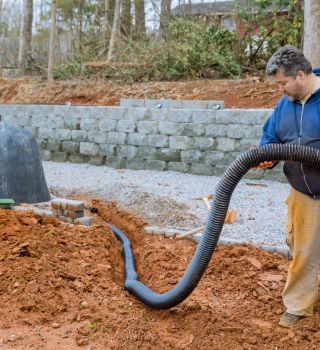
The Role of Bacteria Boosters in Septic Tank Health
While your septic tank naturally contains bacteria, sometimes these populations need a little help. This is where bacterial additives, or “bacteria boosters,” come in. These products, available from specialized retailers like septictank-shop.co.uk, contain concentrated doses of beneficial bacteria and enzymes designed to support your septic system’s natural processes.
Adding these bacteria boosters to your tank can help maintain a healthy bacterial population, especially after events that might have disrupted the tank’s ecosystem, such as the use of antibiotics or a large influx of water from heavy rains. Regular use of these products can aid in breaking down waste more efficiently, potentially reducing the frequency of pump-outs and helping to prevent clogs in your system.
Signs Your Septic Tank Isn't Working Properly
Understanding how your septic tank works also means being able to recognize when it’s not functioning as it should. Some signs that your system might be struggling include:
- Slow draining sinks or toilets
- Gurgling sounds in the plumbing
- Bad odors around the drain field or tank area
- Wet or mushy ground near the drain field
- Sewage backing up into the house
If you notice any of these signs, it’s important to act quickly. Ignoring these symptoms can lead to more serious problems, including complete system failure, which can be extremely costly to repair.
The Environmental Impact of Septic Systems
When functioning properly, septic systems play a vital role in protecting the environment. They help to naturally recycle water, returning it to the ground where it can replenish aquifers. This process also filters out many contaminants, preventing them from reaching groundwater or surface water bodies.
However, a poorly maintained or malfunctioning septic system can have serious environmental consequences. It can lead to the contamination of groundwater and nearby water bodies with harmful bacteria and excess nutrients. This is why proper care and maintenance of your septic system isn’t just about protecting your property – it’s about being a responsible steward of the environment.
Innovations in Septic System Technology
While the basic principles of septic systems have remained largely unchanged for decades, there have been significant innovations in recent years aimed at improving their efficiency and environmental impact.
Advanced Treatment Systems: Some newer septic systems include additional treatment components that can further purify the effluent before it enters the drain field. These might include aerobic treatment units, which introduce oxygen to the treatment process, or media filters that provide additional filtration.
Smart Monitoring Systems: Technology is also making its way into septic system management. Some modern systems now include sensors and monitoring equipment that can alert homeowners to potential problems before they become serious.
Alternative Drain Field Designs: In areas where traditional drain fields aren’t feasible due to soil conditions or space limitations, alternative designs like mound systems or constructed wetlands are being used to effectively treat wastewater.
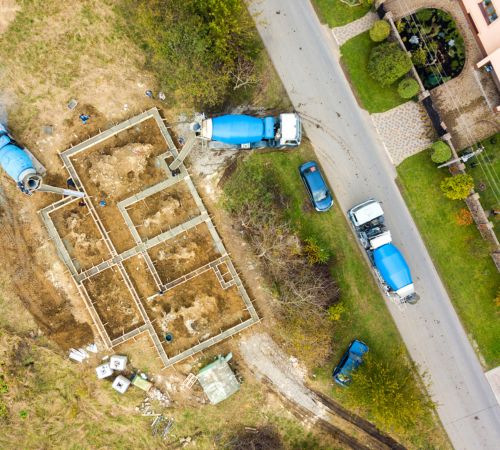
The Future of Wastewater Treatment
As we look to the future, it’s clear that septic systems will continue to play a crucial role in wastewater management, especially in rural and suburban areas. Ongoing research is focused on making these systems even more efficient and environmentally friendly.
One area of particular interest is the development of systems that can more effectively remove pharmaceuticals and personal care products from wastewater. These contaminants, which are increasingly found in our water systems, pose new challenges for traditional treatment methods.
There’s also growing interest in systems that can recover resources from wastewater. This might include capturing nutrients for use as fertilizers or harvesting biogas as a renewable energy source.
Understanding for Better Management
Understanding how your septic tank works is the first step in ensuring its proper function and longevity. By knowing the processes that occur within your tank and the factors that can affect its performance, you’re better equipped to maintain your system effectively.
Remember, your septic system is more than just a tank – it’s a complex ecosystem that relies on a delicate balance of physical, chemical, and biological processes. By treating it with care, using appropriate products like eco-friendly drain cleaners, and staying vigilant for signs of trouble, you can ensure that your septic system continues to serve your home efficiently for years to come.
Whether you’re a long-time septic system owner or new to the world of on-site wastewater treatment, taking the time to understand and care for your system is an investment in your property and the environment. And remember, if you ever need support in maintaining your septic system, resources and products are available from specialized retailers like septictank-shop.co.uk to help you keep your system running smoothly.
Recommended Products for your Septic Tank
-
DWT-Septic Plus – Septic Tank Bacteria – 1kg
Cesspool Bacteria Treatment £57.45 £47.88 (excl. VAT) Add to basket -
Septic Tank Bacteria Booster | Concentrated Formula
Septic tank bacteria £51.45 £42.88 (excl. VAT) Add to cart -
Roebic K37 Septic Tank Treatment | Concentrated Formula
Septic tank bacteria £27.95 £23.29 (excl. VAT) Add to basket -
DWT-Septic – Septic Tank Additives – 1kg
Cesspool Bacteria Treatment £46.95 £39.13 (excl. VAT) Add to basket


